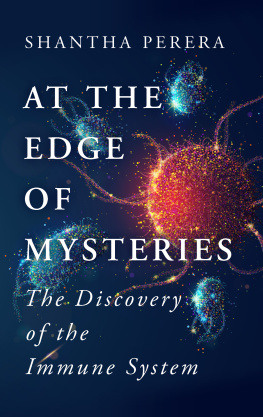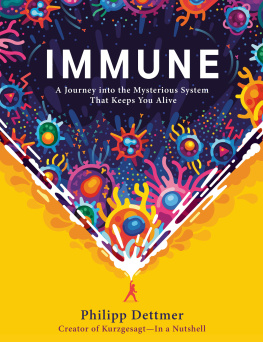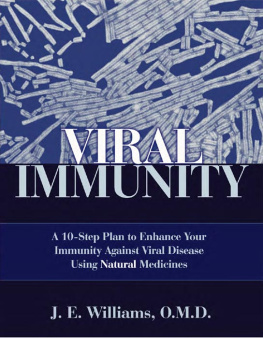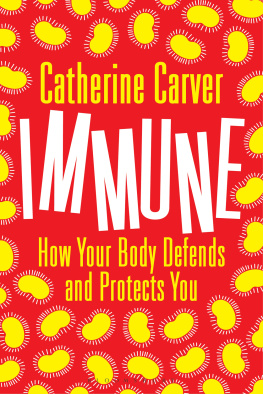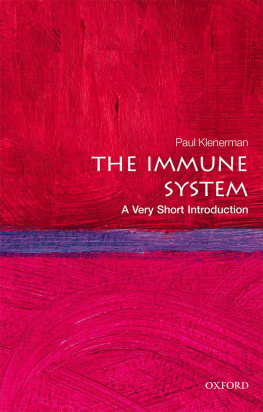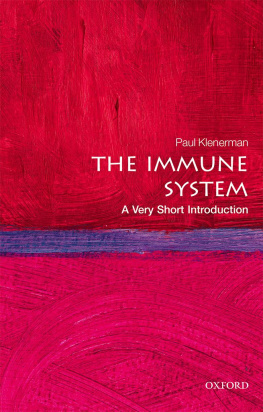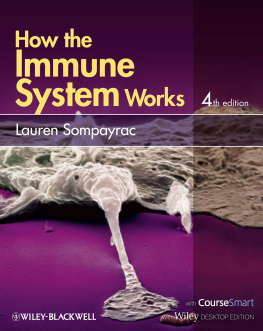Contents
Guide
At the Edge of Mysteries
The Discovery of the Immune System
Shantha Perera

HERO, AN IMPRINT OF LEGEND TIMES GROUP LTD
51 Gower Street
London WC1E 6HJ
United Kingdom
www.hero-press.com
This edition first published by Hero in 2022
Shantha Perera, 2022
The right of the above author to be identified as the author of this work has been asserted in accordance with the Copyright, Designs and Patents Act 1988. British Library Cataloguing in Publication Data available.
Printed and bound by CPI Group (UK) ltd, Croydon, CR0 4YY
ISBN: 978-1-91505-452-4
All the pictures in this volume are reprinted with permission or presumed to be in the public domain. Every effort has been made to ascertain and acknowledge their copyright status, but any error or oversight will be rectified in subsequent printings.
All rights reserved. No part of this publication may be reproduced, stored in or introduced into a retrieval system, or transmitted, in any form or by any means (electronic, mechanical, photocopying, recording or otherwise), without the prior written permission of the publisher. This book is sold subject to the condition that it shall not be resold, lent, hired out or otherwise circulated without the express prior consent of the publisher.
Contents
At the Edge of Mysteries
For Rachel
About This Book
In December 2019 a novel coronavirus caused a devastating pandemic. Not since the Spanish-flu contagion just over a hundred years ago has a virus caused so much fear. SARS-CoV-2 threatened our lives and our livelihoods, and made us utterly vulnerable. At the time of writing, in April 2021, even though we have several effective vaccines there is no effective treatment. As new variants emerge, the efficacy of the vaccines may be reduced, threatening more waves of infection. We only have our immune system.
When I began writing this book there was no coronavirus pandemic. I wanted to write a book that enabled the general reader without a background in science to understand the immune system. My approach involved presenting the components and functions of this complex system through the lens of history, through the lives and work of the doctors and scientists who unravelled the mysteries of the immune system.
Then Covid-19, the mystery disease, appeared. I was obligated to revise the text to describe the ongoing history of the battle between the virus and the immune system. I wrote three new chapters. In the introduction, we see how the immune system responds to the virus. We return to Covid-19 at the end of the book, considering therapeutic approaches used in the past, vaccines and strategies that involve manipulating the immune system in order to tip the scales in our favour.
The book is aimed at the general reader and undergraduate students interested in learning about the immune system. I have included notes at the end of some chapters that go deeper into the subject matter. These paragraphs are written for the student of medical science who has some background in the subject.
Introduction
THE DOUBLE-EDGED SWORD
Beijing, January 2020. A 50-year-old man returned home after travelling to Wuhan. He had been in Wuhan for four days and was in good health, but two days after arriving back fell ill, developing a dry cough and chills. But he continued to work for another week before deciding to present himself at an outpatient fever clinic at his local district hospital. He complained of feverishness, chills, a persistent cough and shortness of breath. He was found to have a fever an elevated body temperature of 39C and a chest X-ray showed multiple patchy shadows in both lungs: the organs were inflamed and the alveoli, the tiny sacs where oxygen is exchanged for carbon dioxide, were full of fluid. He tested positive for SARSCoV-2, the strain of coronavirus that led to the worldwide disease of Covid-19.
He was admitted to an isolation ward, put on supplemental oxygen and given interferon alpha and two antiviral drugs. He was also prescribed an antibiotic in case he developed secondary bacterial pneumonia. As he was short of breath he was started on daily steroids to control the inflammation inside his lungs. None of these drugs were proven to be effective in treating Covid-19, but the doctors were keen to try anything to stop the progression of the disease.
Following treatment, the patients temperature dropped to 36.4C. But the cough, shortness of breath and fatigue did not improve. Worryingly, another X-ray taken 12 days after the onset of illness showed worsening lung infiltration. Surprisingly, his blood oxygen levels were 95 per cent. (The normal range is between 95 and 100 per cent.)
Two days later he became extremely short of breath, but his oxygen levels still remained above 95 per cent. The doctors wanted to transfer him to the intensive care unit, but the man refused. He was frightened: he suffered from severe claustrophobia and did not want to be put on a ventilator. The doctors had no choice but to continue with oxygen delivered through a nasal cannula. The patient was steadily getting worse, but he kept refusing invasive ventilation.
Two weeks after his illness his shortness of breath worsened, and his oxygen saturation dropped to 60 per cent. Then he had a sudden cardiac arrest. He was immediately placed on invasive ventilation; doctors started chest compressions and gave him an adrenaline injection, but the man lost his battle with the coronavirus and died at 6.31 p.m. that evening.
Why did this 50-year-old man die? Why did he get severe pneumonia? Was it down to the virus or was the immune system responsible?
Post-mortem biopsies taken from the lung tissue reflected what his chest X-ray had indicated: damaged alveoli full of fluid containing white blood cells. He had suffered from acute respiratory distress syndrome (ARDS). Blood samples showed that the levels of two key cells of the immune system, helper and cytotoxic T cells, were greatly reduced even though they were activated. These white blood cells are major components of our bodys defences, and a reduction in their numbers makes a person immunodeficient: unable to defend themselves against pathogens and certain cancers. But numbers of another T cell, the Th17 cell, were high. This cell, by secreting certain cytokines small proteins that cause inflammation was in part responsible for the pathology seen in the lungs. Low levels of certain T cells and elevated levels of inflammation caused by cytokines had caused ARDS, leading to the death of the patient.
We have seen this before, in two other diseases caused by pathogenic coronaviruses: severe acute respiratory syndrome (SARS) and These three coronavirus diseases, SARS, MERS and Covid-19, caused mortality by unleashing a cytokine storm in the lungs.
*
The cytokine storm had also killed millions a hundred years ago. The last major pandemic that humanity had to endure was the Spanish flu, which claimed the lives of up to 100 million people globally. The American pathologist Jeffery Taubenberger, the man who brought the 1918 virus back to life, calls this arguably the single deadliest event in recorded human history. What happened then was again at the back of our minds: could it be as bad as 1918? Would there be a second wave?
This had been a different virus, H1N1, as opposed to the ones that caused SARS, MERS and Covid-19, but all these viruses have something in common. They jumped species from birds, camels and bats, posing a formidable challenge to the human immune system, which was unprepared to react to a novel pathogen. But the way some people died appeared to be very similar.

